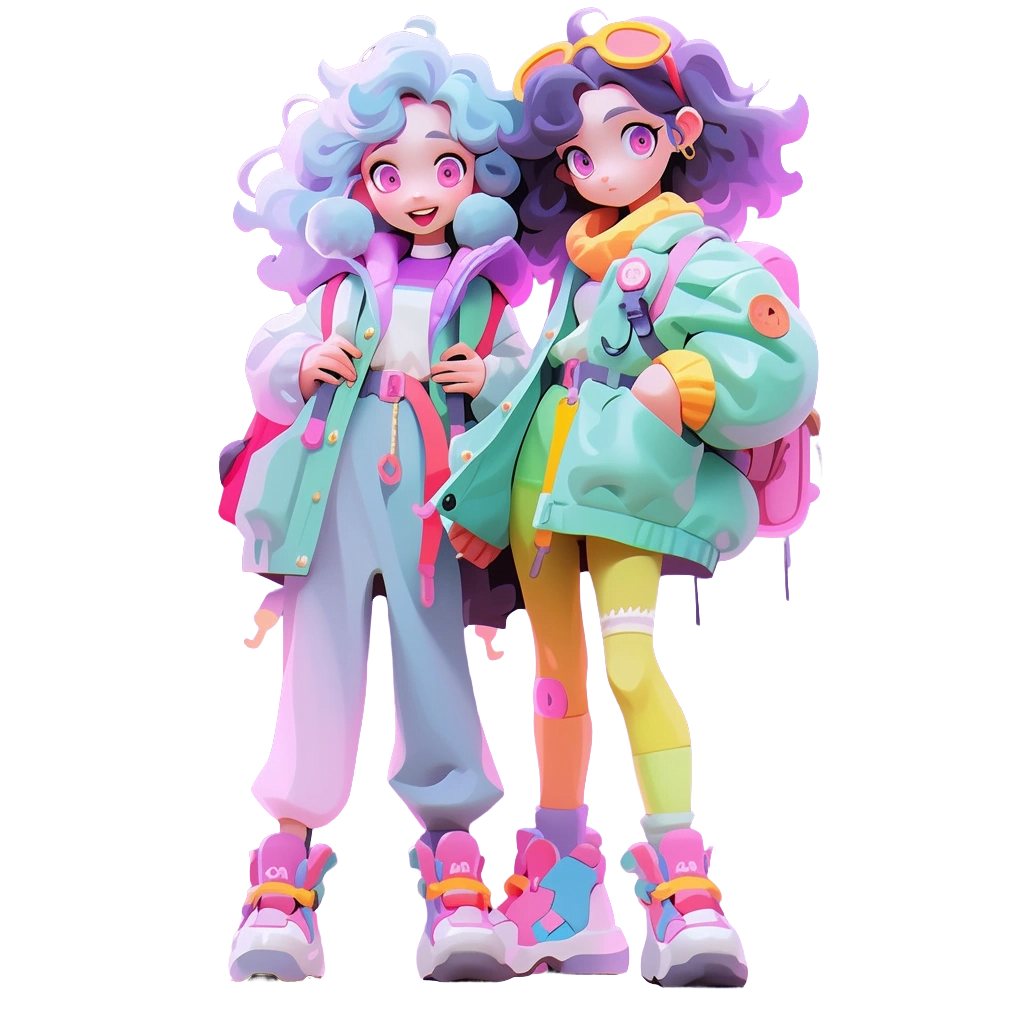📌 Introduction📌
As someone who has worked in the toy manufacturing industry for many years, I understand how critical it is to bring your product to market at the right time. Whether you’re a designer looking to launch a new collectible series or a brand planning a holiday release, time is everything. But one of the most common challenges I see, especially in the world of custom toys and designer collectibles, is the lengthy lead time between placing an order and receiving the final product. Too often, by the time the product is ready for distribution, the initial market opportunity has already passed.
The frustration of missing a key market window is not only disappointing—it can be financially devastating. When your competitors hit the shelves first, or when consumer trends shift before you’ve even launched, it feels like all your efforts have been in vain. But it doesn’t have to be this way. Through my experience, I’ve learned a few strategies that can help significantly shorten the lead time in custom toy production, ensuring that you get your product out there when the market is ready for it. Today, I want to share these insights with you, so you can avoid the costly delays and missed opportunities that too many brands face.
Why Lead Times Matter in the Toy Industry ⏳
Timing is everything in this industry. Consumers are fickle, trends move fast, and seasons dictate purchasing behavior. If you’re a designer working on a limited-edition collectible, you know how crucial it is to capture that moment of excitement. If your product misses the mark by just a few weeks or even days, your target audience might have already moved on to the next big thing. For larger toy companies, it could mean missing a prime selling period like Christmas, which can account for a huge portion of annual sales.
From a manufacturing perspective, lead time is influenced by several factors: the complexity of the design, the availability of materials, the efficiency of the production process, and even the logistics of shipping. But there are ways to optimize each stage, and I’ll walk you through them.
Start with Clear and Detailed Designs 🖍️
The first place where time can be lost is during the design phase. I’ve seen so many projects get delayed because the initial design wasn’t as clear as it needed to be. This results in back-and-forth revisions between the designer and the manufacturer. Each round of revisions adds days, sometimes weeks, to the project timeline.
If you want to avoid these delays, it’s essential that your design files are as detailed and clear as possible from the outset. Provide the manufacturer with comprehensive specifications—dimensions, materials, colors, finishing details—everything you can think of. The more information we have upfront, the fewer questions we’ll need to ask later, and the faster we can move from design to production.
One of the things I always recommend to designers is to work with someone who understands both the creative and technical aspects of toy production. Sometimes what looks great in a 3D render doesn’t translate well into a physical product. A designer who has experience with the manufacturing process will know how to create a design that’s not only visually stunning but also feasible to produce within your desired timeline.
Collaborate Early with Your Manufacturer 🤝
One mistake I see all too often is designers waiting until they’ve finalized their design before involving the manufacturer. This can lead to major delays if the manufacturer discovers issues with the design that could have been addressed earlier. By collaborating with your manufacturer from the very beginning, you can avoid these pitfalls.
In our own processes, we encourage clients to bring us into the conversation as early as possible. We can provide feedback on the manufacturability of a design, suggest alternative materials or production methods that could reduce lead time, and help flag any potential issues that could cause delays down the line. This early collaboration not only shortens the production cycle but also increases the chances that the final product will match the original vision.
Streamline the Prototype Phase 🛠️
The prototype phase is one of the most critical stages in custom toy production, but it’s also one where many projects hit a bottleneck. The back-and-forth between getting the first prototype, requesting changes, and waiting for revisions can drag on for months if not managed properly.
To shorten this phase, I recommend setting up clear expectations with your manufacturer regarding how many prototype revisions will be made and sticking to that number. Too often, endless tweaks to the prototype can drag on for weeks, delaying the start of actual production. Instead, set a firm number of revisions (for example, three rounds) and make sure all necessary adjustments are addressed within those rounds.
It’s also helpful to use digital prototypes (like 3D prints or renders) for initial feedback. While they won’t be a perfect representation of the final product, they can save you weeks of waiting for physical prototypes to be shipped back and forth. Once you’re happy with the digital prototype, you can move to physical samples with much more confidence, reducing the number of revisions needed.
Choose the Right Materials to Speed Up Production 🧪
Material selection plays a significant role in the production timeline. Some materials take longer to source, mold, or assemble than others. If you’re working on a tight schedule, it’s worth discussing material options with your manufacturer to find the best balance between quality and speed.
For example, certain plastics or rubbers might be faster to mold than others, and some finishes may require longer drying times. Even the choice of packaging can impact your timeline—custom packaging might add weeks to your lead time, whereas standard packaging options could be produced much more quickly.
As a manufacturer, we’ve had clients who came to us with specific materials in mind, only to find out that those materials weren’t available within the desired timeline. In these cases, we work with the client to find alternatives that meet their design vision while still allowing us to hit their deadlines. The key is flexibility and open communication—we’re here to help find solutions, but the more we know about your priorities (e.g., speed vs. material), the better we can serve you.
Optimize Your Supply Chain 🌐
Your supply chain is another factor that can make or break your lead time. Even if your manufacturer is working as quickly as possible, delays in sourcing materials or shipping finished products can throw off your entire schedule.
One way to mitigate this is by working with a manufacturer who has a well-established supply chain. In our case, we have strong relationships with trusted material suppliers, and we keep a close eye on market trends and availability. This allows us to anticipate potential bottlenecks and avoid sourcing delays. We can also recommend materials that are in ready supply, rather than those that might require a long wait.
Additionally, if you’re producing overseas, it’s important to factor in shipping times and customs clearance. Consider working with a logistics partner who specializes in international shipments to minimize any potential delays at the border.
Set Realistic Timelines with Built-in Buffers 📅
No matter how well you plan, there will always be unforeseen challenges. Whether it’s a supplier running out of stock or an unexpected issue in the production process, things happen. The best way to protect yourself from these delays is by setting a realistic timeline with built-in buffers.
When you first begin discussing lead times with your manufacturer, ask them about typical production schedules for similar projects. Factor in potential delays and always allow for extra time when setting your launch date. This doesn’t mean you should expect the worst, but rather that you should be prepared for the unexpected. By giving yourself a little extra breathing room, you’ll be able to handle any hiccups without missing your market window.
Communicate Frequently and Transparently 📣
Finally, communication is key to ensuring your project stays on track. Regular check-ins with your manufacturer can help you catch any potential delays before they become major issues. At our company, we prioritize frequent updates to keep clients informed about the status of their orders and any potential risks to the timeline.
If a delay does arise, transparency is crucial. Rather than keeping you in the dark, we believe in addressing the issue head-on and working together to find a solution. By keeping the lines of communication open, we can often find ways to make up for lost time and still meet your delivery date.
Conclusion: Timing Is Everything—But It’s Manageable 🌟
In the fast-paced world of custom toy production, hitting your market window can be the difference between success and failure. But by taking proactive steps to streamline the production process, you can significantly reduce lead times and ensure that your product is ready when your customers are.
By focusing on clear designs, early collaboration, optimized prototypes, efficient material choices, and strong supply chain management, you can bring your toys to market faster and more efficiently. And remember, communication is key—by keeping an open dialogue with your manufacturer, you can catch potential delays early and work together to resolve them.
If you’re struggling with long lead times or have missed market opportunities in the past, I encourage you to take these strategies to heart. They’ve worked for us, and I’m confident they’ll work for you too. Let’s work together to ensure your next custom toy project is a timely success, and you’ll never miss another market opportunity again.








